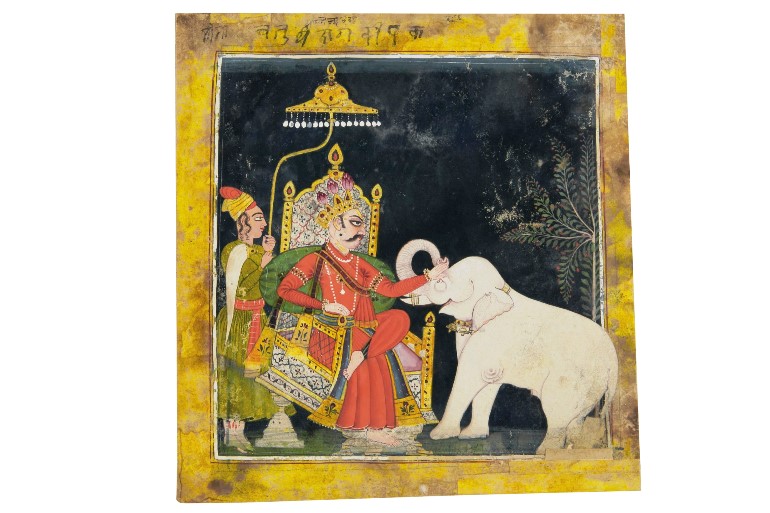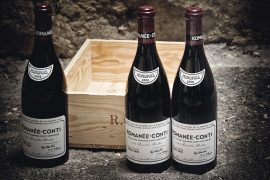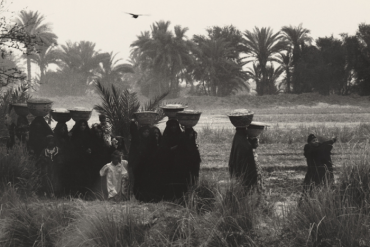Christie’s 4th India Sale will offer around 150 lots, including 71 lots of Classical Indian Art, which Christie’s introduced as an auction category for the first time last year. As already announced, the sale will be led by the private art collection of Abhishek and Radhika Poddar. Royal court paintings from the collection of Colonel R.K. Tandan and bronzes collected by Mr. Sohrab K. Bhedwar, architect of Mumbai’s Eros Cinema, are also included. Please note, all works in the Classical Indian Art section are registered antiquities and are therefore non-exportable. The auction will be held on 18 December 2016 at The Taj Mahal Palace Hotel, Mumbai. Credit Suisse continues to be Christie’s partner in India.
Classical Painting
This half of the auction will offer Royal Court paintings as well as Classical sculptures and is led by 42 court paintings from the collection of Colonel R.K. Tandan, dating from the 15th to mid-19thcenturies.
Colonel R.K. Tandan’s (1921-2009) passion for Indian art was cultivated by his father, a well-known art critic. The family home in Allahabad was open to poets, writers and artists, including the likes of Amrita Sher-Gil and Nicholas Roerich, the latter whose work features in the Modern Masterpieces section of the India Sale. According to the Colonel’s daughter Shilpa Mehta, her father started collecting when he was a new recruit in the army back in 1944, gradually building one of the finest personal collections of ancient Indian art comprising over 1,000 objects and paintings, dating from the 2nd century BC to the 19th century AD. After 24 years of service the Colonel decided to take early retirement to have time to devote to his passion for collecting, writing and giving lectures on art, which he did with the full support and participation of his wife Urmila (illustrated right, together).
A highlight of the sale is a folio from the “Tandan” Ragamala: Shri Raga, (illustrated above left, estimate: INR 70,00,000-1,00,00,000 / US$106,000-151,000) circa 1700. This is one of four paintings on offer to come from an iconic Pahari series of Ragamala painting attributed to the small Himalayan foothill of Basohli. Ragamala or the “Garland of Ragas” is the visual depiction of the classical Indian musical form of the raga, with each raga belonging to a family. Shri Raga in particular is associated with splendour and affluence. A drawing of a closely related composition of Shri Raga can be found at the National Museum, New Delhi.
Sculpture
Carved in deep relief with extraordinary detail, this impressive stele of Vishnu (illustrated above right) demonstrates the masterful craftsmanship of twelfth century artists working in North-western India. Temple construction by the twelfth century witnessed an embellishment of sculptural form. This grey stone figure of Vishnu, circa 12th century (estimate: INR 15,00,000-20,00,000 / US$23,000-30,000) depicts the deity surrounded by an entourage of his avatars, attendants and other deities. The artist has emphasised the prowess of the deity through a strong frontal pose with wide shoulders and hips, protruding chest, and a halo with a triangulated rim. This particular sculpture’s detailed carving, pleasing size and complete condition make it a superb example of medieval North-western Indian sculpture.
Another large and elaborate stele of Vishnu, this time from the 11th century, depicts the god in a powerful frontal stance emerging from an ornate niche (illustrated left, estimate: INR 20,00,000-25,00,000 / US$30,000-38,000). His body is modelled with exceptional naturalism, his broad shoulders and robust thighs emphasised by a fleshy yet tapered waist. Carved in extremely deep relief, the stone appears multi-dimensional and capacious. Of particular note is the pierced halo, a detail which is typically incised rather than carved in openwork.
Beautifully carved in polished stone, the subject and style of a stone figure of a Mother Goddess, possibly a Matrika, circa 6th century, make for a very rare sculpture (illustrated right, estimate: INR 40,00,000-60,00,000 / US$60,000-90,500). Beautiful and unusual traits such as the large halo with a triangulated rim are paired with substantial and voluptuous forms, making the goddess a fine example of the rounded physique of Gupta period sculpture. This figure is in impressive condition and is particularly animated, standing in graceful sway instead of hieratic stillness. This figure of a goddess is a rare example of North Indian sculpture during the Gupta period and a masterful depiction of feminine strength.
Bronzes from the Bhedwar Collection
Credited with having built one of downtown Mumbai’s most recognised Art Deco buildings, the iconic Eros Cinema which still stands today, Mr. Sohrab K. Bhedwar, was a renowned architect of Bombay. A Fellow of the Royal Institute of British Architects (FRIBA), he was however less well known as a visionary who put together one of India’s leading 20th century collections of Classical Indian Art. Over a three decade period he astutely assembled a museum-worthy collection that included exquisite South Indian bronzes, Nepalese copper images and Tibetan sculptures as well as sculpture from Gujarat, Rajasthan and the Deccan. The bronze and copper sculptures in the India Sale (lots 66-71), consigned by a direct descendant of Mr Bhedwar, include a bronze shrine of a Jina (illustrated left, estimate: INR 4,00,000-6,00,000 / US$6,000-9,000) and a bronze figure of a goddess, possibly Sri Devi, circa 15th century (illustrated right, estimate: INR 4,00,000-6,00,000 / US$6,000-9,000).





